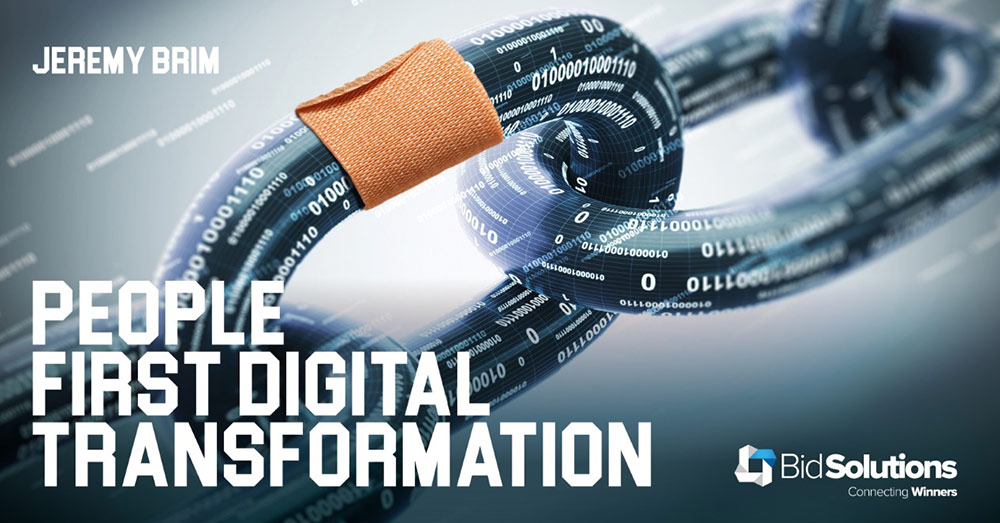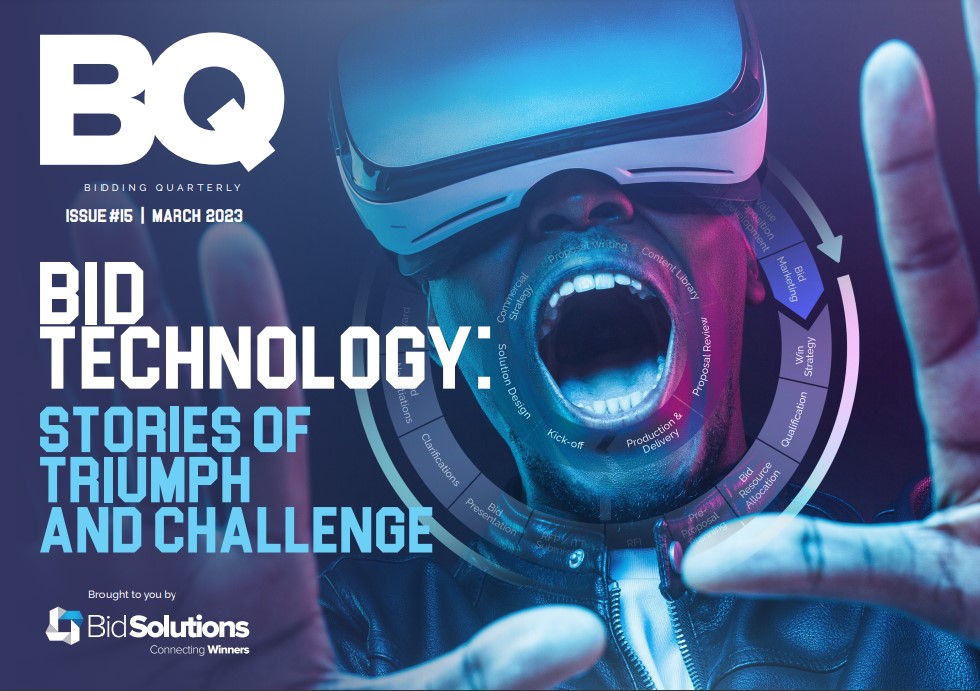
Often I’m approached by fellow bidding professionals for my opinion on particular technology platforms in our space. My initial reaction is always the same: Are you looking to treat symptoms or cure diseases?
Very often people are looking for technology products as sticking plasters to remedy symptoms when the causes of the problems are much deeper or larger issues. Just procuring a product is highly unlikely to massively impact your win rate, reduce your cost of sale or stem the tide and burden of bidding alone. Successful implementation and adoption of technology rarely happens when treated as an IT project in isolation.
Wherever possible I urge colleagues to follow wider principles of organisational transformation, with technology being an enabler rather than the objective itself.
Sponsorship
Sponsorship is the biggest defining factor in the success of any initiative, particularly in this space. Whatever the business problem is you are trying to solve, you need somebody senior behind you to drive the initiative forward, be seen to lead and role model positive behaviours. It’s far more important than just having someone senior to sign off the spend. Having a good sponsor on board will mean the initiative is recognised and spoken about in senior circles and therefore receives the right attention and resources. They also provide some limelight on the project which tends to attract more junior people to want to support and be engaged.
Clear Objectives, Roles and Responsibilities
Like any project, improvement initiatives need consensus on clear agreed smart objectives and well-defined roles and responsibilities. We can’t have two people both taking responsibility for an activity or having actions falling between stalls. Just like a bid plan, you should probably have a project execution plan that details objectives and responsibilities and schedules out the timeline for the project. This acts as your single version of the truth control document.
Benefits Case
Before you attempt an improvement or indeed a technology product purchase, we should clearly understand the size of the prize. I’d recommend benchmarking your existing processes and approaches against best practices throughout the winning work spectrum from end to end. I would also recommend developing a thoughtful benefits case for change, accounting for quantifiable financial benefits as well as less quantifiable and non-financial benefits, such as improved wellbeing. While a robust benefits case will clearly be critical to gaining senior support and funding, it is also a useful tool to support the engagement of your wider community and followship or support for the initiative. Change initiatives, and particularly technology deployments, tend to fail where users aren’t party to the benefits for them and the business.
Design clear processes
Engage stakeholders across your work winning lifecycle to work together to draft your complete processes and approaches to winning deals. This will ensure nobody is left behind or feels left out, and the technology you require as enablers to those processes is properly thought through in terms of interdependencies and data flows. If relationships or stakeholder behaviours don’t support the endeavour, then progress what you can. At least you tried to engage the business.
Specify technology that enables that transformation
You should only attempt to specify and procure technology to solve your problems once you’ve got a robust business case, a plan, and draft processes mapped out. Clearly the upcoming BQ Tech initiative by Bid Solutions will give a new level of insight on what products exist in the marketplace and how they are best placed to help. For instance, the requirements of work winning functions facing a smaller number of large complex competitive bids are very different to organisations facing a large number of smaller proposals. You should specify thoughtfully based on your needs and desired outcomes and spend time to ensure you procure properly.
Perhaps we should all learn lessons from bidding to clients and shape our procurement with good supplier engagement. Holding a ‘hackathon’ or workshops with suppliers to further shape the detail of your specification and requirements will help to ensure you leverage the best thinking in the market.
Best of luck!
This article was written by Jeremy Brim.
Jeremy works with leadership teams and business owners as a consultant and advisor to plan and deliver sustainable growth through analysis and interventions across the sales cycle. Jeremy has also taken on leadership of the Bid Toolkit, bringing with him a wealth of bidding knowledge and desire to help businesses of all sizes improve their win rates.

